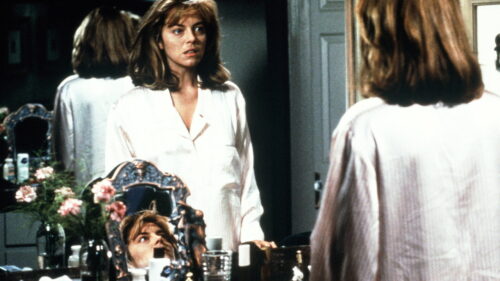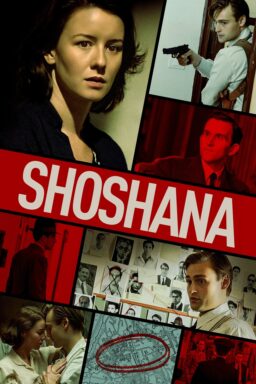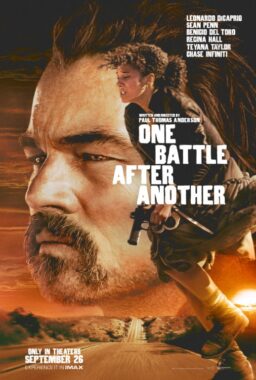“Wonderstruck” director Todd Haynes might be the benevolent, mirror-universe image of Quentin Tarantino. They’re both well-versed in certain parts of film history, and eager not just to demonstrate their knowledge, but tie it to a story that resonates with them personally. But where Tarantino’s references tend to be audaciously in-your-face, to the point of sampling compositions and whole soundtrack cues immortalized by classic films, Haynes tends to work in a more graceful way, largely without footnotes, telling a story with while simultaneously working through a set of propositions or equations, and producing work that feels at once sincere and detached.
I mostly admired “Wonderstruck,” which cross-cuts between two stories of two children living fifty years apart, mainly for its (seemingly lavish) period details, its many bold or clever directorial touches, and the assured flow of its imagery. Haynes isn’t afraid to linger on particular moments—such as children chasing each other through New York’s Museum of Natural History, or a group of movie theater patrons staring at silent film unreeling on a giant screen—because they’re fascinating on their own terms, not just because they advance the plot. Unfortunately, the final section succumbs to a curiously commercial (for Haynes) urge to tie everything up in a too-neat bow. Even if this indicates nothing more than a desire to do justice to the source, a book by author and illustrator Brian Selznick, whose The Invention of Hugo Cabret was adapted into Martin Scorsese’s film “Hugo,” it kills a lot of the poetry and mystery that “Wonderstruck” manages to generate in its first two-thirds. That being said, there’s quite a bit to like about this film, which, like so many Haynes productions, is the sort of project that it would only occur to Todd Haynes to make.
The two main characters are Ben (Oakes Fegley of the “Pete's Dragon” remake), a 1970s orphan from Gunflint, Minnesota who responds to the recent death of his mother (Michelle Williams) by sneaking off to New York City on a bus to find the father he never knew; and Rose (Millicent Simmonds), a Hoboken girl living in 1927 who takes the ferry from Hoboken to find Lillian Mayhew (Haynes regular Julianne Moore), a silent film actress she’s obsessed with. (Spoilers from here; you were warned.) Lillian is deaf, and as the story unfolds, Ben becomes deaf after being struck by lightning: a marvelous storytelling stroke. You know how certain contemporary filmmakers bleed most of the color out of their films because they always wanted to make a black-and-white movie, but after a certain budget level, studios generally won’t allow it? The same thing is happening here, but with sound. The middle hour of “Wonderstruck” is Todd Haynes and his frequent cinematographer Ed Lachman making as close to a silent movie as they can get away with in the 21st century. They let the scenes of Rose and Lillian play out silently, not aping the style of actual silent films from the period—1927, the year sound came in—but by creating their own modern silent film aesthetic, in widescreen black-and-white, with music but no dialogue; and dipping the audio out of Ben’s 1977 scenes whenever we’re seeing things from his perspective (save for a faint ringing-ear sound, muffled voices, and a handful of sound effects).
As “Wonderstruck” goes on, the film history-conscious moviegoer will realize that even though the production methods are modern (period-accurate city skylines were made with computer software; the entire movie was shot digitally, in CinemaScope dimensions) the characters, plot points and emotions owe as much to the conventions of “silent cinema” as the film Rose sees in a theater. At the very least, it’s situated in a knowingly melodramatic (or fairy tale) mode that was more common to films of that era than ones that are made now. There are coincidences so huge that they don’t so much feel like cheats as grand statements on the machinery of destiny or fate, such as Lillian turning out to be the mother who abandoned Rose; and the elderly Rose (now played by Julianne Moore again, unfortunately in makeup that’s the single least convincing thing in the movie) befriending the runaway Ben, thus becoming the maternal savior figure that Ben and the child Rose both lost in their own ways.
There are also a lot of incidents of narrative mirroring, or a type that tend to be more acceptable in melodramas than in purportedly “realistic” stories. Two isolated, unprotected white children are shown compassion by black characters a half-century removed (Ben’s brief friendship with Jamie, played Jaden Michael, the son of a museum employee, could’ve been broken off into a whole other film had Haynes chosen to go that route). Rose’s ferry journey parallels Ben’s bus ride. Children hide from adults in the same museum fifty years apart. There are shots of inky night skies dotted with pinpricks of starlight, juxtaposed with magical city skylines (some are bejeweled CGI panoramas, others are closeups of a scale model that’s only revealed in the final sequence), and moments where cosmic forces seem to be affecting both children. The “blackout” that hits in 1977 becomes a kind of sneaky corollary for the deafness of the two main characters—absence of light equating with absence of sound, in scenarios that force the audience to deduce totalities of meaning after being given only a handful of details. And of course there are a few plot points that wouldn’t have even come up if certain characters had been honest with other characters, but you try not to think about that, or think about it and smile because it’s intrinsic to the kind of film you’re watching.
This is all much more fun to write about and think back on than it is to watch, honestly. There’s never a moment when there aren’t at least four or five things worth looking at and listening to; kudos to Sandy Powell’s costumes, Mark Friedberg’s production design, Carter Burwell’s characteristically grand yet melancholy score, and the bold use of Deodato’s disco cover of “Also Spake Zarathustra,” which I thought had been marked “Property of ‘Being There’ and retired. But at the same time, “Wonderstruck” often feels stranded somewhere between abstract curiosity and an almost Spielbergian level of proud corniness. That one cannot be entirely sure how to take Haynes’ tone makes the film intriguing but also frustrating. He seems to be poker-faced sincere here, but we’re never sure about what, exactly. There’s a fanatical exactness to the filmmaking, and to the production generally—the 1977 clothes and wigs, including afros, are some of the best I’ve ever seen outside of my own actual childhood—and it translates into a sense that we’re watching an obsessive work, a labor of love that scratches some private itch. But the emotions that are ultimately generated are amorphous and bland, in the manner of the sorts of Hollywood film that one could imagine Haynes finding tame—not because of the story they’re telling, but because whatever it was that thrilled the filmmaker in the first place got lost en route to the screen.
Haynes’ debut feature, “Superstar,” was the first example of his simultaneously passionate/scientific approach. It retold the life story of singer Karen Carpenter using Barbie dolls, but anybody who’s been lucky enough to see it anyway can testify that it’s no spoof, and definitely no joke. Haynes treats the inexpressive dolls as if they’re human actors emoting their little plastic butts off, whirling and tilting the camera during musical sequences, and lighting dollhouse interiors in the manner of sumptuous 1950s Technicolor melodramas. His 1998 musical fake-biopic “Velvet Goldmine” paid tribute to “Citizen Kane” and the Swingin’ London art house films of the late 1960s and early ’70s, while filling the soundtrack with glam rock favorites and new tunes that sounded plausibly like work that could’ve been a hit during that period. His 2007 Bob Dylan biopic “I’m Not There” was another “Kane” riff of sorts, expressing the unknowability of a legendary rock star by having several actors (and one actress) play him. His 2002 Douglas Sirk pastiche “Far From Heaven” seemed to have been devised in answer to the question, “What if Hollywood had been allowed to tackle interracial romance and the miseries of being in the closet in the fifties, but with a bit of the censorial squeamishness they applied to everything else at that time?” That this is a question no one but Haynes would ask and try to answer only makes the film more confounding.
As thought experiments, all of these works are invaluable, even though in the end I prefer Haynes’ “Poison,” “Safe” and the miniseries “Mildred Pierce” for the way they foreground the main characters’ feelings and examine them in a more direct, at times searingly painful way, while the expected and often impeccable Todd Haynes style swirls around and behind them. I’m glad I saw “Wonderstruck,” though, for the same reason I’m glad to see all of Haynes’ films: it draws on too many sources that can be listed in a single essay, yet it’s uniquely its own thing. The moments when it really cooks made me long for an entire film on that level.












